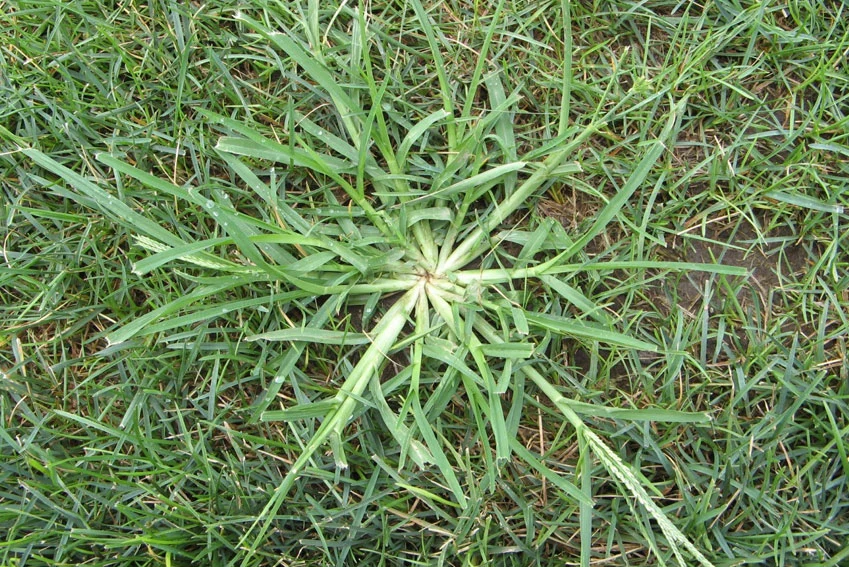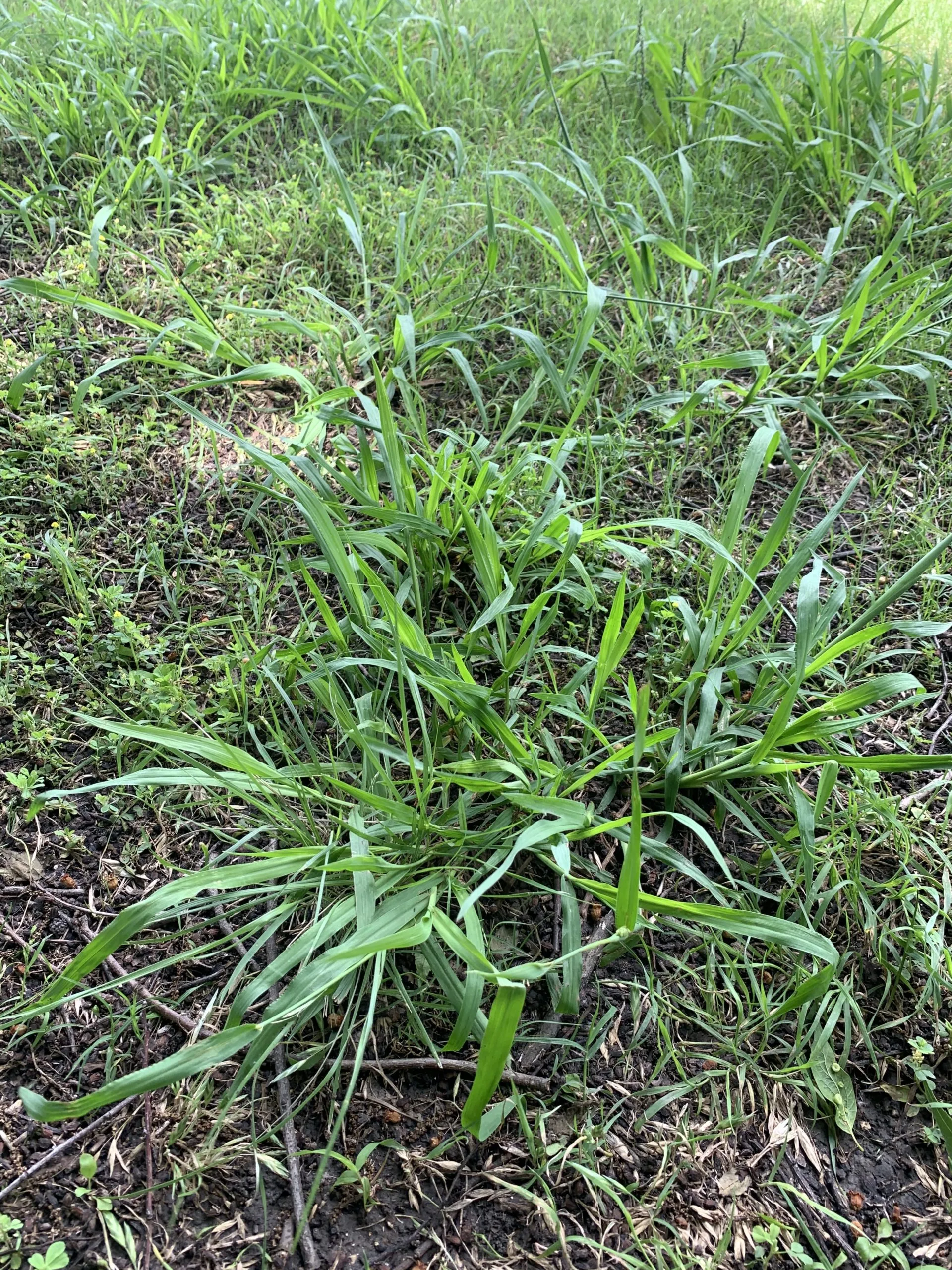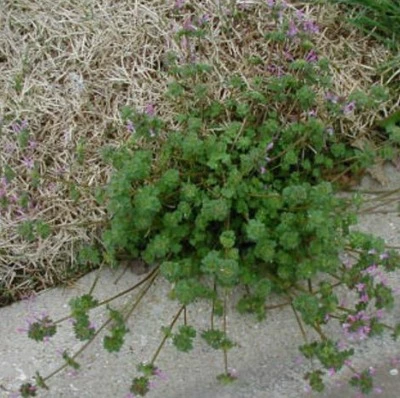It’s spooky season, and you know what that means! No, not fun-sized candy and pumpkin carving. We’re talking about pre-emergent weed treatments. You might think the season is over and there’s nothing more you can do to protect your lawn until Spring, but that’s not actually the case. Winter annuals are starting to take root in the healthy soil under your lawn, ready to take root in the Spring when the ground warms up. Fall (preferably before the end of October) is the best time to get rid of them.
Bottom line: Next year’s lawn care begins right now in the fall.
Before we get into our pre-emergent treatments, let’s talk a bit about some of the weeds and winter annuals that are sniffing around your lawn’s beautiful, healthy roots as we speak.
In North Texas, we’re blessed with a long growing season. This is a good thing for those of us who like to spend time outdoors. Unfortunately, it also means weeds on the hunt for healthy nutrients (such as those found in your lawn) have long seasons too. What weeds? Glad you asked.
Bittercress
You know those tiny white flowers that come up through your lawn with the long, thick stalks? That’s Bittercress, one of the scourges of North Texas lawns.
Bittercress is actually a winter annual, even though it doesn’t emerge until early Spring. Because of this, Bittercress can be particularly insidious, as most people do not realize they have an infestation brewing until long after Bittercress sets up shop, which can hamper effective treatment methods.
But there’s a silver lining when it comes to Bittercress. Because it’s an annual, if you successfully kill it with pre-emergent treatment, Bittercress stays gone.
Crabgrass

Want to hear something interesting about crabgrass in North Texas? We’ve got not one, but two varieties to contend with. That’s right. We get smooth and hairy crabgrass, both of which are equally crabby. Okay, bad joke. And maybe inappropriate because crabgrass is nothing to joke about.
When crabgrass (both types) germinates in the Spring, it tends to grow faster than your turf. This means crabgrass can easily come to dominate your lawn. Crabgrass tends to prefer short, sparse turfs where it spreads more easily.
The best course of action is to treat it early and maintain a thick, healthy lawn.
Dallisgrass

Dallisgrass, perhaps the most Texas of all our winter annual invasives, if only in name.
Dallisgrass is a stalky, clumpy weed that starts growing in the fall. As part of CFL’s lawn care program, we always throw in some post-emergent treatment that will prevent the seeds from germinating but it will not prevent an established plant from coming back next year. It’s important to know that we cannot control Dallisgrass with post-emergents other than Roundup so it’s essential you get this one early.
Dandelions
While the other weeds on this list might be slightly harder to identify, there is no mistaking a dandelion. Unlike the other weeds on our list, dandelions are perennials. This means that if you don’t take care of them, they will continue coming back.
Dandelions are another weed that we treat using post-emergent liquid weed control. Healthy grass then fills the void and helps prevent dandelions from taking root next season.
Henbit

Henbit blooms in Spring with pink, purplish flowers. It has a thin stem with crowning green leaves. In the Winter before it blooms, henbit with its shallow root system advances violently. Henbit will charge across your healthy lawn and take over before it knows what hit it.
Pre-emergents in the Fall are the best way to manage henbit.
Annual Bluegrass
Unlike many of the others on our list, it’s possible you can already spot clumps of annual bluegrass in your lawn right now. Also known as Poa Annua, it grows from late summer into the Fall. Because its seeds germinate over a long period of time, bluegrass is particularly hard to manage.
We treat it with a combination of pre and post-emergents to keep it from growing and to kill the weeds that have already started.
Spurge
Spurge is a broadleaf weed. Its leaves grow in matched pairs that travel up and down the stalk. It is a clumpy weed that likes to grow in patches. Spurge grows aggressively in Spring and Summer so the best management technique is to apply pre-emergent treatment in the Fall.
Lawn Care Treatment in North Texas
We could talk about winter annuals and weeds all day long. There are several we could mention that didn’t even make our list. We’re talking about clover, chickweed, rye, rescuegrass. The list goes on. The bottom line is this: If you wait to manage weeds and winter annuals until the Spring, you’re giving yourself a much more difficult job.
One thing that’s true 99.9% of the time in the landscaping industry is that weeds become harder to manage once they germinate. Meaning if you can see them, your job becomes much harder. Often, the only solution is to get down on your knees and yank those babies out one by one and replace the weeded area with healthy sod. And we don’t care how much yoga you do, that sounds like a recipe for a sore back.
The best way to manage weeds is to stop them from rearing their ugly little heads. To treat them with pre-emergent control methods that will stop them from taking root and prevent them from germinating. This stops the spread in its tracks and creates a situation where healthy grass can thrive.
At College Fund Landscaping, our pre-emergent treatment is safe, fast, and thorough. We apply our first treatment in September/October, the second treatment in January/February, and the final treatment in March/April. Different weeds germinate at different times of the year and each herbicide has a different residual (how long it lasts) therefore the most effective program has multiple applications! Also, every pre-emergent treatment comes with post-emergent treatment. The way we see it, your lawn is as much our responsibility as yours, and we take pride in doing the best job possible, helping to create a space where you and your family can create beautiful memories, without having to worry about crabgrass under your feet.


Comments (0)
Thanks for your comment!
Thanks for your feedback! Your comments have been successfully submitted! Please note, all comments require admin approval prior to display.
Error submitting comment!
There is a problem with your comment, please see below and try again.